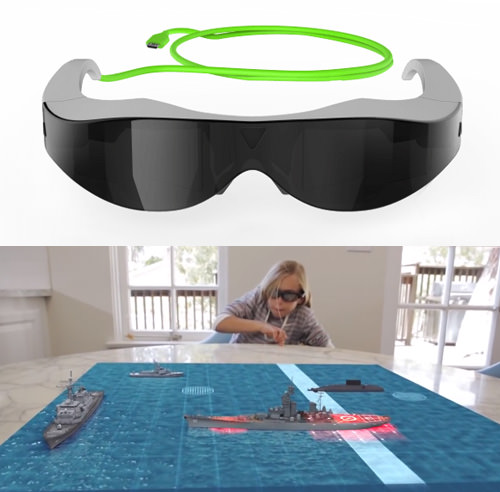Six Intereting AR Smart Glasses You Can Buy
Ever since Google launched its Google Glass project, the reality of wearable eyewear seems to be inevitable. Since then, developers from around the world have been trying to take on Google Glass by creating their wearable display glasses. Instead of just being able to take photos or videos, smart glasses have the potential to do so much more.
With capabilities such as being able to integrate augmented reality with your own, feeding you live information during your activities, projecting images at a high resolution, and even letting you manipulate 3D objects with ease; it’s only a matter of time before smart glasses become a part of our daily lives.
With that in mind, take a look at our list of six forthcoming augmented reality & smart glasses that you can buy to have a look at the future of wearable gadgets.
“Top-To-Toe” Wearable Gadgets You Can Buy
The thing with electronic gadgets is that it is a display of your taste, your style and even... Read more
Moverio BT-200
The Moverio BT-200 is an augmented reality headset capable of watching HD contents (3D supported). It also enhances your augmented reality experience when using AR-related apps. This headset comes with a front-facing camera, a motion sensor, a built-in Dolby Digital Plus for sound, GPS, microphone, compass, and projectors.
It works by projecting images at a resolution of 960×540 to the transparent glasses, allowing you to watch videos, play games, navigate, and plenty more without losing sight of the physical world.
Unlike most augmented reality glasses, instead of being wireless, it needs to be connected to an Android-based device at all times. That’s where all the computing power comes from. This allows BT-200 to last for up to 6 hours with impressive specifications like a 1.2GHz dual-core processor, 1GB RAM, the drivers for Dolby Digital, and an Android system running on Ice Cream Sandwich.

Vuzix M-100
This type of smart glasses will help in relaying information directly to you from a wearable monocular display, similar to that of Google Glass. Vuzix M-100 also comes with direct-onboard processing features plus a camera to help it capture and display an augmented reality. However, its focus is on enterprise, commercial and medical applications.
Vuzix M-100 smart glasses is based on Android; therefore, it is compatible with thousands of Android applications. It also includes the Nuance Communication speech-to-text software to help improve the M-100 voice dictation system.

Icis
These augmented reality glasses look like any standard glasses without any visibly prominent components such as a camera. But that doesn’t mean that Icis doesn’t come with a camera. In fact, it does. It even comes embedded with other components such as a speaker, microphone, battery, the circuit board, and everything to make it look like normal eyewear.
Icis can easily be connected to smartphones running Android, iOS, and Windows platforms using a Bluetooth connection. They’re planning on creating an app called socialFlo that allows you to select which apps you’d want to see present in Icis as widgets.

GlassUP
There’s a general idea that most wearable computers with the display are the second output for your smartphone or tablet devices. GlassUp wants to be just that. Unlike other products in this market niche, GlassUp only projects in monochrome instead of full color to improve its battery life duration. It also projects display into your field of vision, making it easier to read your notifications.
Some of the features that come with GlassUP range from sending out emails to reading RSS feeds. GlassUp can also be used in aiding the hearing impaired and even receive translations display when talking in different languages. It’s more than just a second output for your smartphone.

Atheer One
Here’s another company that regards its augmented reality glasses as an accessory to your smartphone or tablet devices. The Atheer One smart glasses promote natural interaction, where you can use hand gestures to control it. It consists of two displays for each eye almost equivalent to a 26-inch tablet being put in landscape right in front of your face.
Atheer One requires your Android device to function as it needs to leverage the 2D available in Google Playstore to be converted into a 3D environment. Because Atheer One displays 3D graphics right in front of your eyes, it’s better to interact with the graphics using your hands, as it feels more natural.

K-Glass
K-Glass is a wearable, hands-free display project that’s similar to others but has a unique technology to it. Unlike the others, K-Glass focuses on replicating the process of how our brains form our surroundings when it receives information from our eyes. Using a technology called Visual Attention Modem (VAM), it categorizes relevant and irrelevant visual data, replicating the human brain’s ability.
This way, K-Glass can give its user even more intelligent augmented reality. Hence, providing its user with present and relevant information. For example, you’re looking for something to eat and end up outside of some restaurant; K-Glass can prompt you with an overlay menu of that restaurant’s food. Therefore, you don’t have to waste time and effort in getting that information.
